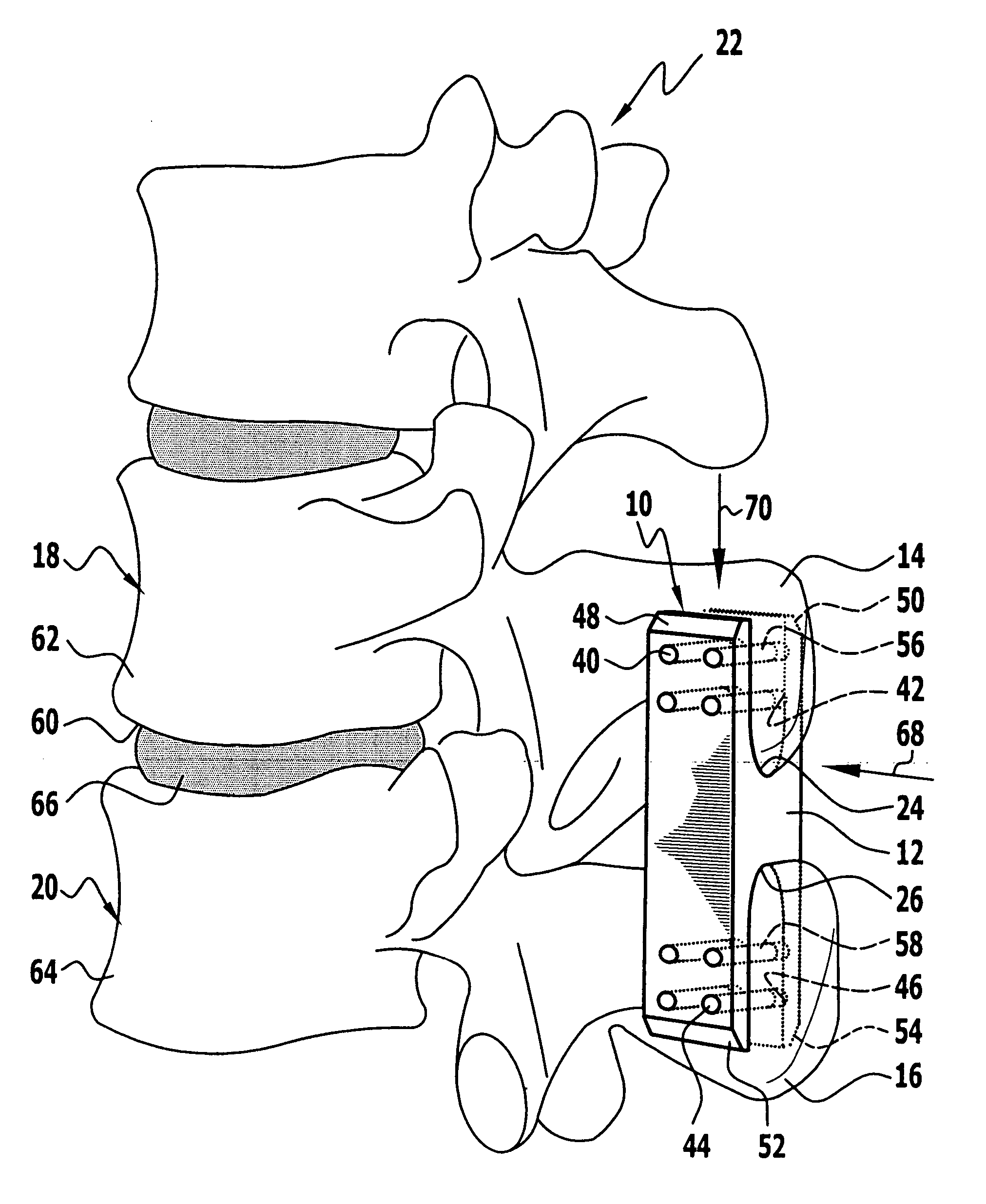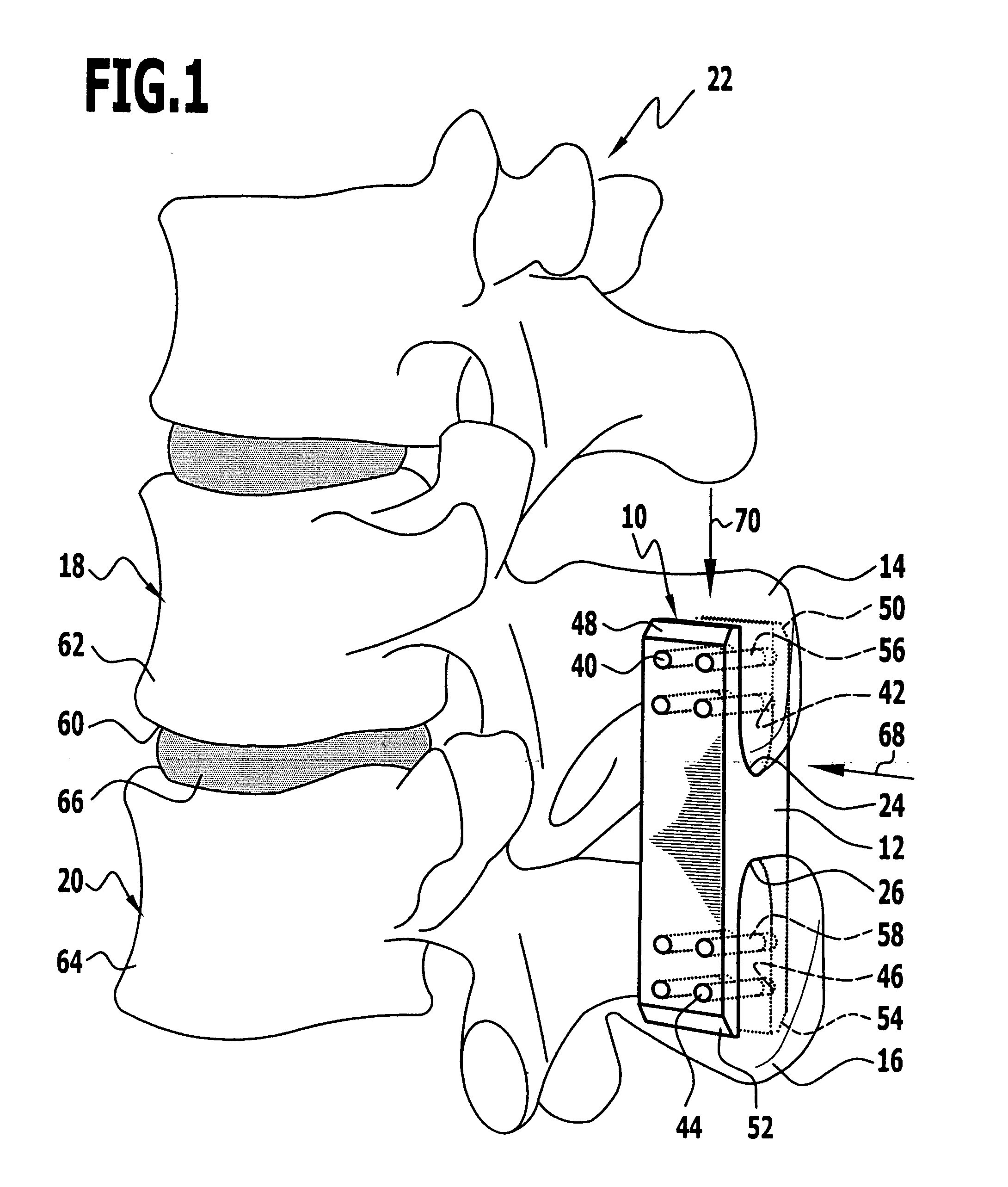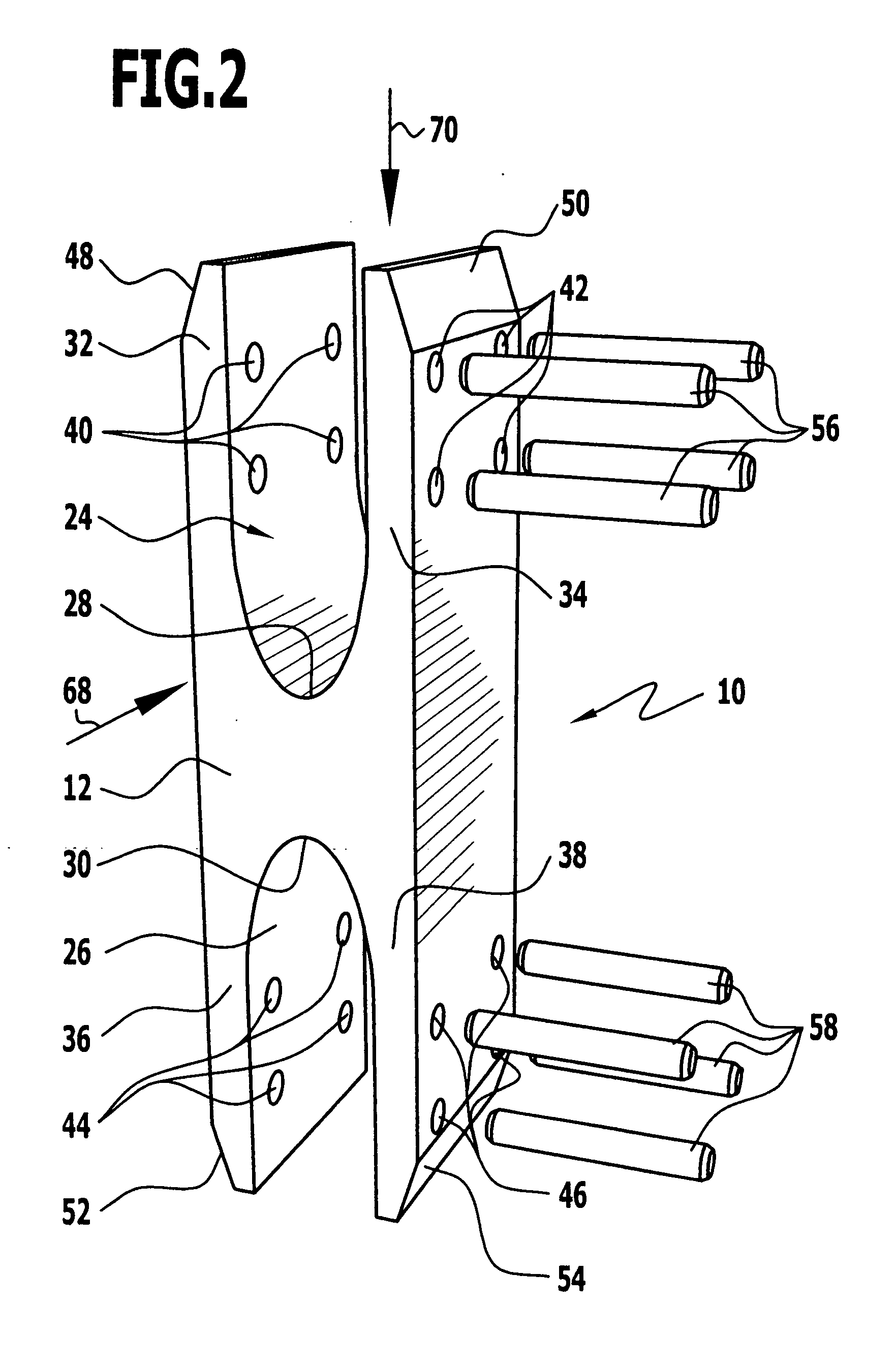Implant for alleviating pressure on intervertebral disks and method for restoring the height of and alleviating pressure on an intervertebral space
a technology of intervertebral disks and implants, which is applied in the field of implants for alleviating pressure on intervertebral disks, can solve the problems of undesired trauma, inability to move a spinous process, and insufficient time for an adequate stabilization, so as to achieve relief of pressure, relieve pressure, and carry out particularly easily
- Summary
- Abstract
- Description
- Claims
- Application Information
AI Technical Summary
Benefits of technology
Problems solved by technology
Method used
Image
Examples
Embodiment Construction
[0065] An implant 10 for alleviating pressure on intervertebral disks according to the invention and provided with the reference numeral 10 is illustrated in FIGS. 1 and 2 and this implant will be designated in the following only as implant for the sake of simplicity.
[0066] The implant 10 is formed by an elongated, basic member 12 which is essentially in the shape of a parallelepiped and has an approximately square cross section. Proceeding from oppositely located end faces of the basic member 12, two groove-like receptacles, which point away from one another, are provided for spinous processes 14 and 16, respectively, of adjacent vertebra 18 and 22 of a spinal column 22 in the form of groove-like recesses 24 and 26. The recesses 24 and 26 are each limited by a curved groove base 28 and 30, respectively, as well as two wall sections 32 and 34 or 36 and 38, respectively, which extend parallel to one another away from the groove base 28 and 30, respectively, and are aligned parallel ...
PUM
 Login to View More
Login to View More Abstract
Description
Claims
Application Information
 Login to View More
Login to View More - R&D
- Intellectual Property
- Life Sciences
- Materials
- Tech Scout
- Unparalleled Data Quality
- Higher Quality Content
- 60% Fewer Hallucinations
Browse by: Latest US Patents, China's latest patents, Technical Efficacy Thesaurus, Application Domain, Technology Topic, Popular Technical Reports.
© 2025 PatSnap. All rights reserved.Legal|Privacy policy|Modern Slavery Act Transparency Statement|Sitemap|About US| Contact US: help@patsnap.com



